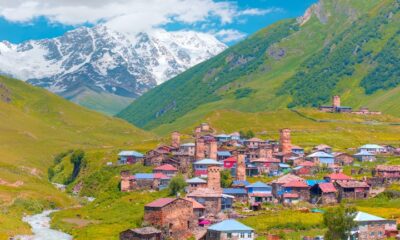
Shutterstock
From ancient wonders to modern marvels, the world is dotted with landmarks that define the essence of the cities they inhabit. These iconic structures and monuments are more than just tourist attractions; they are symbols of history, culture, and the indomitable spirit of their people. Each landmark tells a unique story, from tales of innovation and engineering feats to legacies of empires and movements that shaped civilizations.
Whether rising majestically against city skylines or nestled within breathtaking natural landscapes, these structures capture the imagination of millions every year. Let’s explore 30 of the most famous landmarks that continue to leave an indelible mark on the world.
The Eiffel Tower

Shutterstock
The Eiffel Tower is one of the most iconic structures in the world, standing proudly in the heart of Paris. Completed in 1889 for the World’s Fair, it was initially criticized by some of the city’s leading artists and intellectuals. However, over time, it has come to symbolize the elegance and romanticism of Paris. Today, it attracts nearly 7 million visitors annually, offering breathtaking views of the city from its observation decks.
Statue of Liberty

Shutterstock
The Statue of Liberty is a symbol of freedom, democracy, and hope, located in New York Harbor. It was a gift from France to the United States, completed in 1886 to celebrate the centennial of American independence. The statue stands 93 meters tall, including its pedestal, and welcomes millions of visitors who take ferries to Liberty Island every year. Its iconic torch and crown have become symbols of new beginnings for immigrants arriving on American shores.
Big Ben

Shutterstock
Big Ben, officially named the Elizabeth Tower, is one of London’s most famous landmarks. The clock tower was completed in 1859 and has been keeping time ever since, even through wars and periods of national crisis. It is part of the Palace of Westminster, which houses the UK Parliament, and has become a symbol of British culture and resilience. The chimes of Big Ben are recognized around the world and are broadcast during major events like New Year’s Eve.
Colosseum

Shutterstock
The Colosseum is an ancient amphitheater located in the heart of Rome, Italy. Completed in AD 80, it was the largest of its kind and could hold up to 50,000 spectators for gladiatorial contests and public spectacles. Despite centuries of earthquakes, fires, and even stone scavenging, it remains remarkably well-preserved. Today, it serves as a powerful reminder of the grandeur and complexity of the Roman Empire.
Sydney Opera House

Shutterstock
The Sydney Opera House is an architectural masterpiece, instantly recognizable for its sail-like design. Opened in 1973, it has become a cultural hub for performing arts, hosting everything from operas and concerts to theater and dance performances. Located on Sydney’s picturesque harbor, it is one of the most photographed buildings in the world. The Opera House is also a UNESCO World Heritage site, symbolizing Australia’s creativity and cultural richness.
The Great Wall of China

Shutterstock
The Great Wall of China is a monumental structure that stretches over 13,000 miles, spanning deserts, mountains, and plains. It was built over several dynasties to protect the northern borders of China from invasions. Today, it stands as a testament to human ingenuity and endurance, drawing millions of tourists who hike along its scenic sections. The wall is not just a military defense structure but a symbol of China’s strength and historical depth.
Christ the Redeemer

Shutterstock
Christ the Redeemer is a towering statue that overlooks Rio de Janeiro, Brazil, from the peak of Mount Corcovado. Standing 30 meters tall with outstretched arms, it is considered a symbol of peace and harmony. Completed in 1931, the statue has become a major pilgrimage site for Christians and a cultural icon for Brazil. It offers panoramic views of the city, including famous beaches like Copacabana and Ipanema.
Taj Mahal

Shutterstock
The Taj Mahal is a stunning white marble mausoleum in Agra, India, built by Emperor Shah Jahan in memory of his beloved wife, Mumtaz Mahal. Completed in 1653, it is a UNESCO World Heritage site and one of the New Seven Wonders of the World. The intricate designs, symmetrical gardens, and reflection pool add to its beauty and serene atmosphere. It stands as a symbol of eternal love, attracting millions of visitors from around the globe each year.
The Pyramids of Giza

Shutterstock
The Pyramids of Giza are some of the most iconic and oldest structures in the world, located on the outskirts of Cairo, Egypt. Built as tombs for pharaohs over 4,500 years ago, they have stood the test of time, enduring earthquakes and erosion. The Great Pyramid, the largest of the trio, was once the tallest man-made structure in the world. These ancient monuments continue to fascinate archaeologists and tourists alike, offering a glimpse into the ingenuity of ancient Egyptian civilization.
Burj Khalifa

Shutterstock
The Burj Khalifa is the tallest building in the world, soaring to a height of 828 meters in the heart of Dubai, UAE. Completed in 2010, it has redefined the city’s skyline and become a symbol of Dubai’s rapid modernization and ambition. The skyscraper features luxurious hotels, residences, and observation decks that provide breathtaking views of the surrounding desert and coastline. Its design and construction reflect innovative engineering and a futuristic vision.
The Acropolis

Shutterstock
The Acropolis is an ancient citadel that rises above Athens, Greece, offering stunning views of the city below. It is home to the Parthenon, a temple dedicated to Athena, the goddess of wisdom and war. Built in the 5th century BC, the Acropolis symbolizes the glory of ancient Greece and the birth of democracy. Today, it remains a powerful icon of classical architecture and cultural heritage.
The Empire State Building
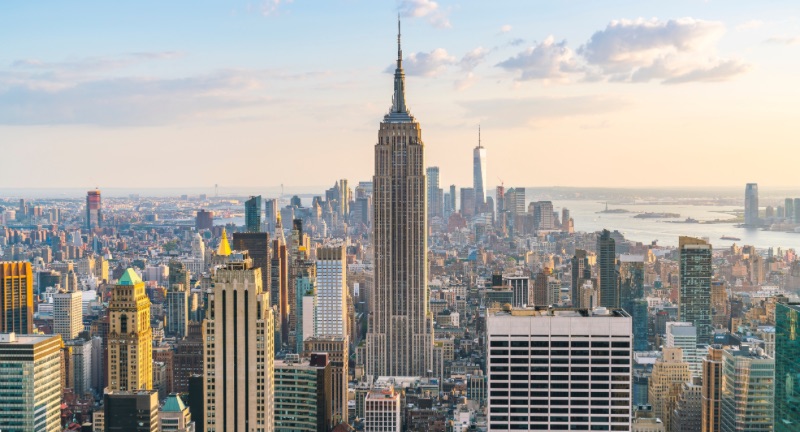
Shutterstock
The Empire State Building is an iconic skyscraper that has defined the New York City skyline since its completion in 1931. Standing at 443 meters, it was the tallest building in the world for nearly four decades. Visitors can take elevators to the 86th and 102nd-floor observation decks, offering unparalleled views of Manhattan. The building is a symbol of American ingenuity, determination, and the city’s resilience.
Machu Picchu
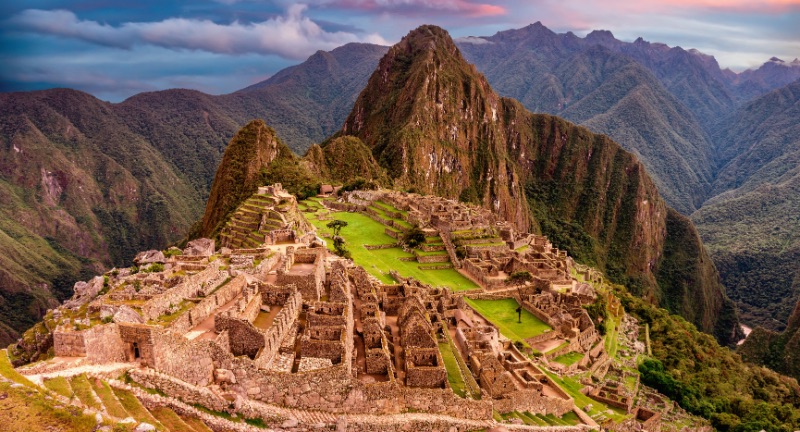
Shutterstock
Machu Picchu is an ancient Incan city perched high in the Andes Mountains of Peru. Built in the 15th century and later abandoned, it was rediscovered in 1911 by explorer Hiram Bingham. The site is renowned for its well-preserved ruins, terraced slopes, and breathtaking natural surroundings. It remains a powerful symbol of Peru’s cultural heritage and attracts visitors from all over the world.
St. Basil’s Cathedral
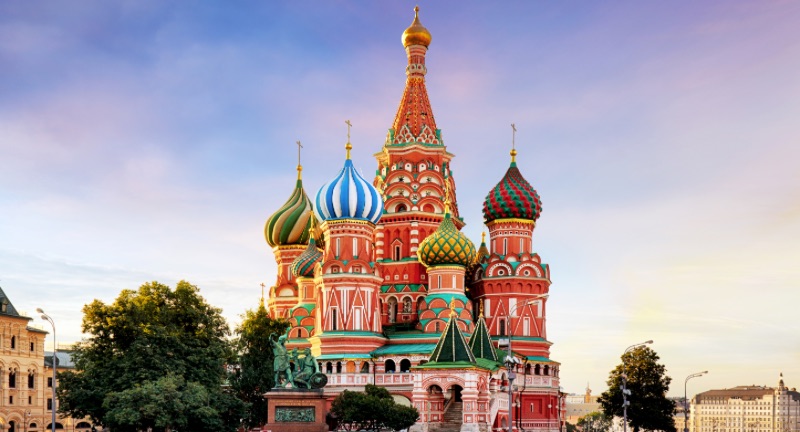
Shutterstock
St. Basil’s Cathedral is one of Moscow’s most distinctive landmarks, located at the southern end of Red Square. Built in the 16th century under the rule of Ivan the Terrible, it is famous for its colorful, onion-shaped domes. The cathedral’s design is unique, blending traditional Russian architectural styles with elements of Renaissance art. It stands as a symbol of Russian culture, history, and religious heritage.
The Leaning Tower of Pisa
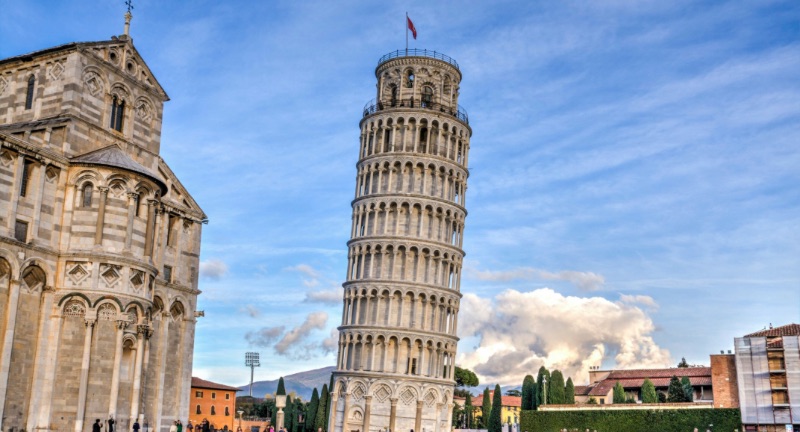
Shutterstock
The Leaning Tower of Pisa is a freestanding bell tower that has become world-famous for its unintended tilt. Construction began in 1173, but the tower began leaning due to soft ground on one side. Efforts have been made to stabilize it, and today it stands at a slight but safe angle. The tower is an iconic example of medieval engineering and remains one of Italy’s most visited landmarks.
Tokyo Tower
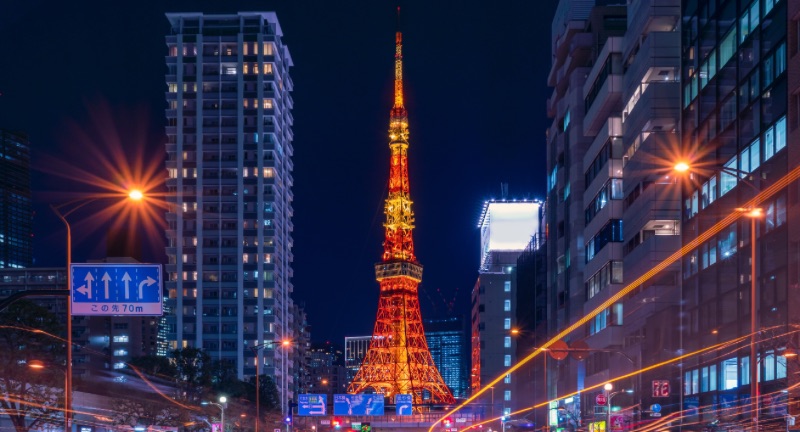
Shutterstock
The Tokyo Tower is a bright orange and white communications tower that dominates Tokyo’s skyline. Modeled after the Eiffel Tower, it stands at 333 meters and was completed in 1958 as a symbol of Japan’s post-war rebirth. It serves as a broadcasting tower and offers observation decks with sweeping views of the city. The Tokyo Tower’s vibrant colors add a unique charm to the bustling metropolis.
The Louvre Museum
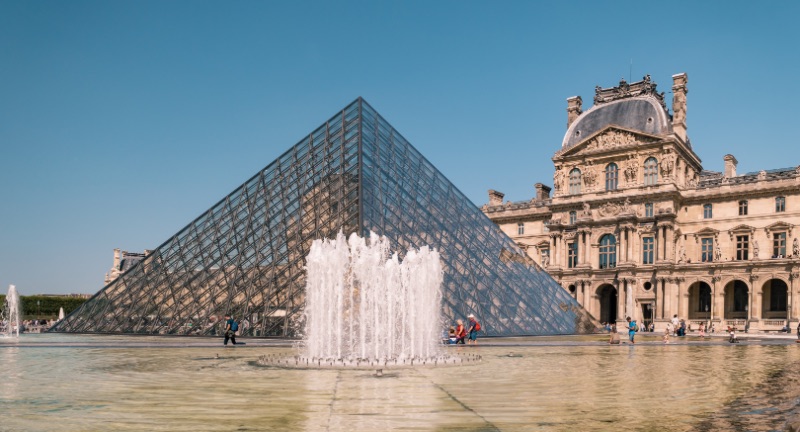
Shutterstock
The Louvre Museum is the largest art museum in the world, located in Paris, France. Originally a royal palace, it was converted into a public museum during the French Revolution. Its famous glass pyramid entrance has become an iconic symbol, drawing millions of visitors every year. The museum houses over 35,000 works of art, including masterpieces like the “Mona Lisa” and the “Venus de Milo.”
Golden Gate Bridge
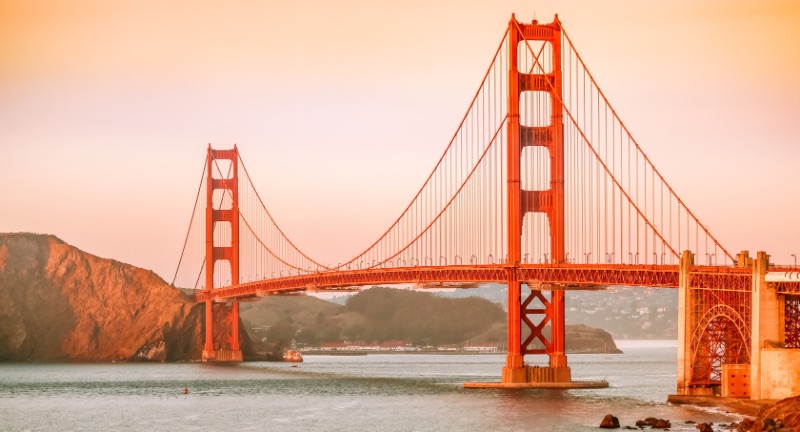
Shutterstock
The Golden Gate Bridge is an iconic suspension bridge that connects San Francisco to Marin County, California. Completed in 1937, it was considered an engineering marvel and has become one of the most photographed landmarks in the world. Its bright red-orange color stands out against the backdrop of the bay and misty fog. The bridge symbolizes innovation, strength, and the adventurous spirit of the West Coast.
Brandenburg Gate
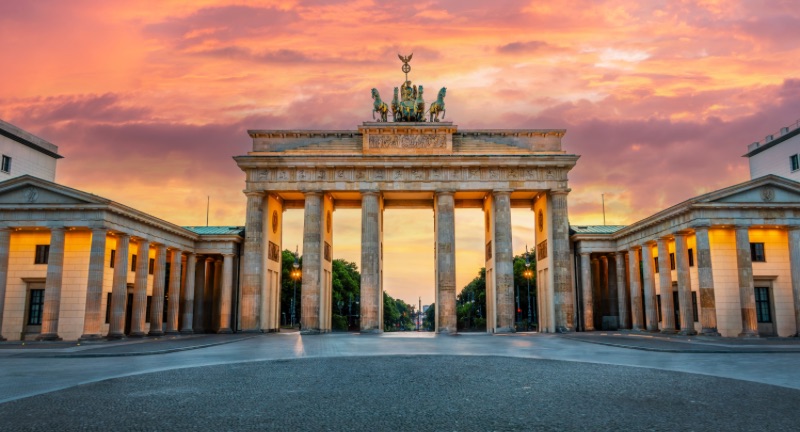
Shutterstock
The Brandenburg Gate is a neoclassical monument in Berlin, Germany, built in the late 18th century. It once marked the entrance to the city and later became a symbol of division during the Cold War. After the Berlin Wall fell in 1989, it transformed into a powerful icon of German reunification and peace. Today, it stands as a historical reminder and a popular gathering place for celebrations.
The Shard
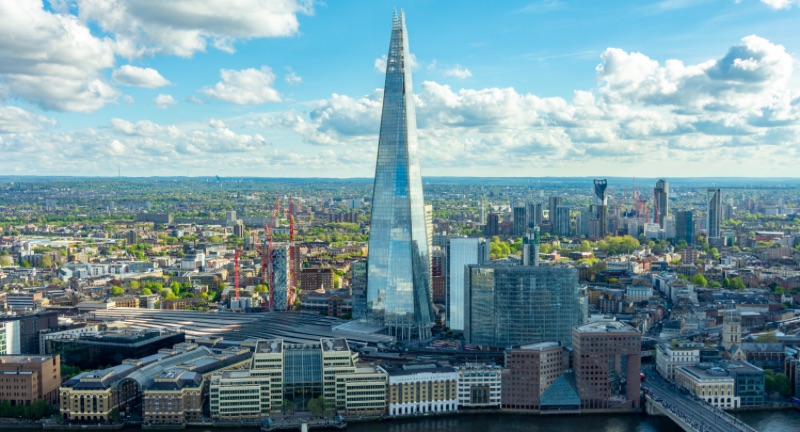
Shutterstock
The Shard is a sleek, glass-covered skyscraper that towers over London, England. Completed in 2012, it stands at 310 meters, making it the tallest building in the United Kingdom. Its modern design symbolizes the dynamic, forward-thinking nature of London. The Shard houses offices, restaurants, and observation decks that offer stunning panoramic views of the city.
Hagia Sophia
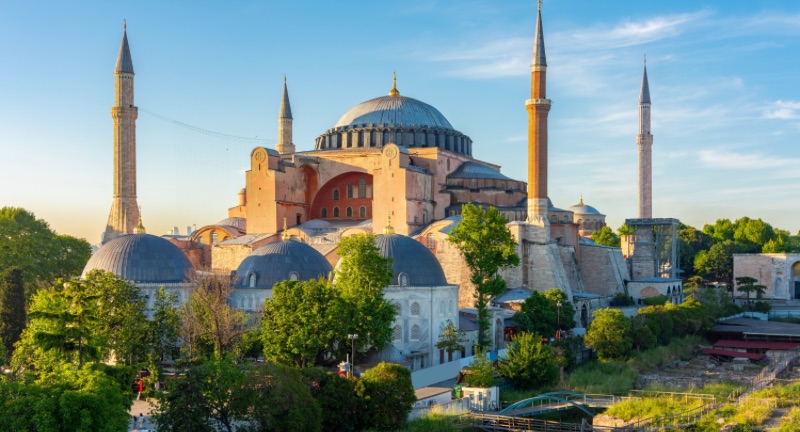
Shutterstock
Hagia Sophia is a magnificent structure in Istanbul, Turkey, originally built as a cathedral in 537 AD. It later became a mosque and is now a museum, reflecting Istanbul’s diverse cultural history. Known for its massive dome, beautiful mosaics, and impressive architectural feats, it has influenced countless buildings worldwide. Hagia Sophia symbolizes the rich blend of cultures and religions that have shaped the city over the centuries.
Petronas Towers
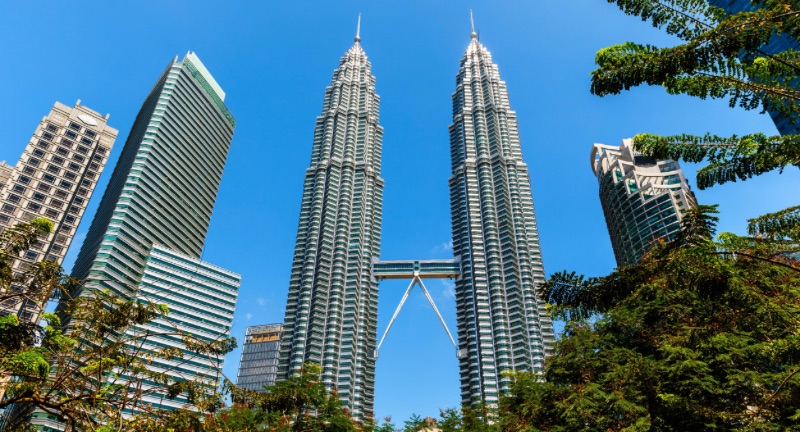
Shutterstock
The Petronas Towers are twin skyscrapers that dominate the skyline of Kuala Lumpur, Malaysia. Standing at 452 meters, they were the tallest buildings in the world from 1998 to 2004. Their design incorporates elements of Islamic art, reflecting Malaysia’s cultural heritage. Connected by a sky bridge, the towers have become a symbol of the country’s economic growth and modernity.
Sagrada Família
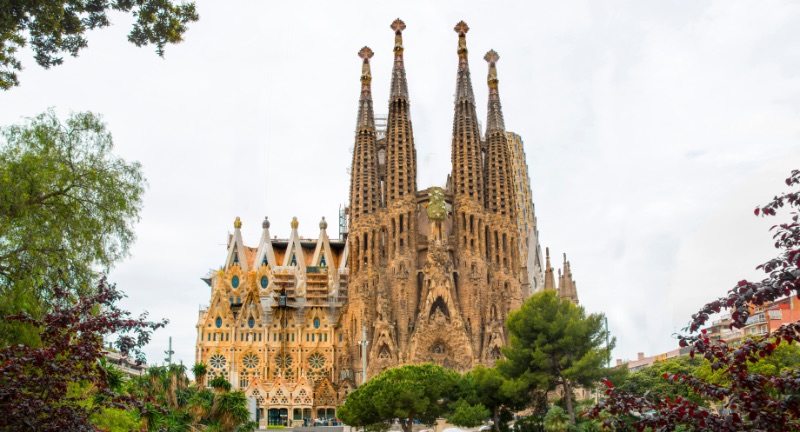
Shutterstock
The Sagrada Família is a basilica in Barcelona, Spain, designed by the renowned architect Antoni Gaudí. Construction began in 1882 and is still ongoing, making it a unique blend of architectural styles across different eras. The basilica’s intricate facades and towering spires make it one of the most stunning examples of Gothic and Art Nouveau design. It has become a symbol of Barcelona’s creativity and artistic spirit.
Neuschwanstein Castle
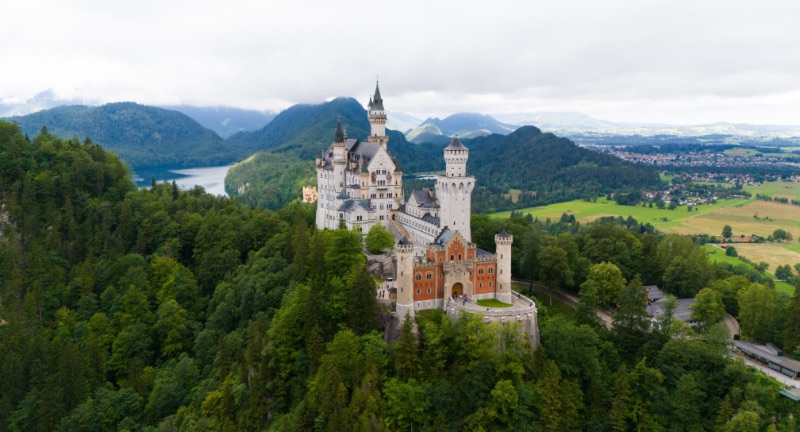
Shutterstock
Neuschwanstein Castle is a 19th-century castle located in the Bavarian Alps, near the town of Füssen, Germany. Commissioned by King Ludwig II, it was designed to resemble a romantic, medieval fairytale castle. Its stunning location and picturesque architecture have made it one of the most photographed buildings in Europe. The castle’s enchanting design even inspired the iconic Disney castles.
The Gateway of India
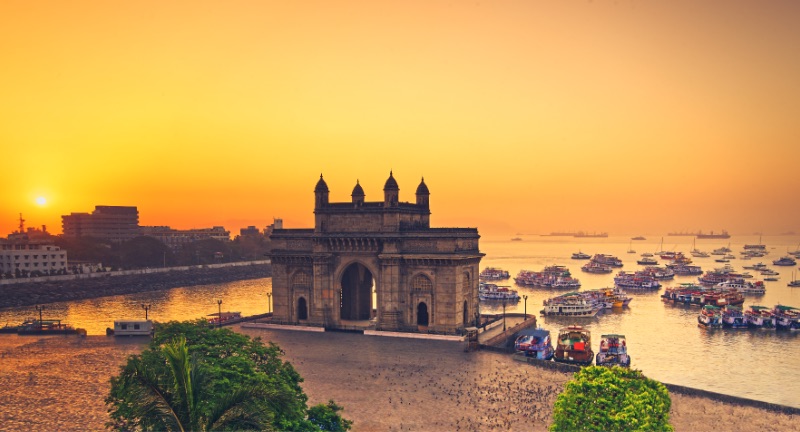
Shutterstock
The Gateway of India is an arch monument that stands at the waterfront in Mumbai, India. Built in 1924, it commemorates the visit of King George V and Queen Mary to India. It has since become a symbol of the city, greeting millions of visitors and tourists arriving by sea. The monument’s design blends Indian and European architectural elements, reflecting Mumbai’s diverse heritage.
Mount Fuji

Shutterstock
Mount Fuji is Japan’s tallest mountain, rising to 3,776 meters and located near Tokyo. This snow-capped peak is an active volcano that has become a symbol of Japan’s natural beauty and spiritual heritage. It has inspired countless artists, poets, and photographers, and remains a popular destination for climbers. Mount Fuji represents tranquility, strength, and the enduring connection between nature and culture in Japan.
The Kremlin

Shutterstock
The Kremlin is a historic fortified complex located in the center of Moscow, Russia. It has been the seat of power for Russian rulers since the time of the tsars and now serves as the official residence of the President. The complex includes palaces, cathedrals, and government buildings, making it a symbol of Russia’s political authority. Its architectural grandeur reflects the nation’s history, culture, and strength.
The Vienna State Opera

Shutterstock
The Vienna State Opera is one of the world’s most renowned opera houses, located in the heart of Vienna, Austria. Opened in 1869, it is known for its magnificent architecture and cultural significance. The opera house hosts world-class performances, from classical operas to ballets, attracting audiences from around the globe. It stands as a symbol of Vienna’s rich musical heritage and artistic passion.
Table Mountain

Shutterstock
Table Mountain is a flat-topped mountain that overlooks the city of Cape Town, South Africa. It is one of the most recognizable natural landmarks in the world and a major attraction for hikers and tourists. The mountain’s unique shape, diverse ecosystem, and stunning views make it a symbol of Cape Town’s natural beauty. It has been named one of the New Seven Wonders of Nature, highlighting its global significance.
The Blue Mosque

Shutterstock
The Blue Mosque, or Sultan Ahmed Mosque, is an architectural masterpiece located in Istanbul, Turkey. Built in the early 17th century, it is named for the blue tiles that adorn its interior walls. The mosque’s six minarets and large courtyard make it a stunning example of Ottoman architecture. It remains an active place of worship and a popular destination for tourists, symbolizing Istanbul’s cultural and religious heritage.
Conclusion
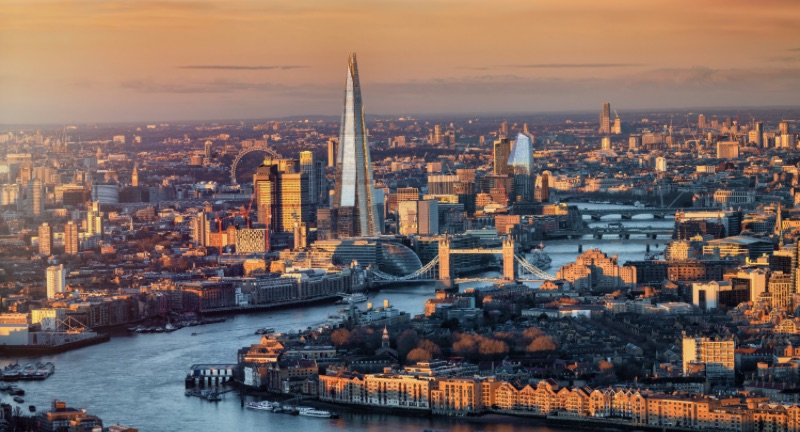
Shutterstock
These landmarks are more than just architectural feats; they are enduring symbols of the cities they represent, reflecting their history, culture, and identity. From soaring towers and majestic statues to ancient ruins and modern wonders, each one holds a unique place in the hearts of locals and travelers alike. As you journey through these iconic sites, you’re not just visiting a place—you’re experiencing the stories, dreams, and spirit that define these incredible cities.

 News2 months ago
News2 months ago
 Lifestyle3 months ago
Lifestyle3 months ago
 Entertainment3 days ago
Entertainment3 days ago
 Entertainment3 days ago
Entertainment3 days ago
 Lifestyle2 months ago
Lifestyle2 months ago
 Lifestyle2 months ago
Lifestyle2 months ago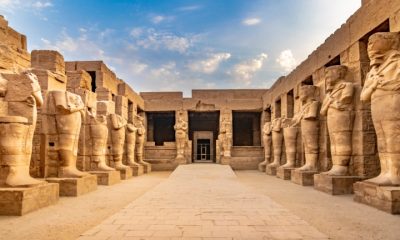
 Lifestyle2 months ago
Lifestyle2 months ago
 News2 months ago
News2 months ago








































